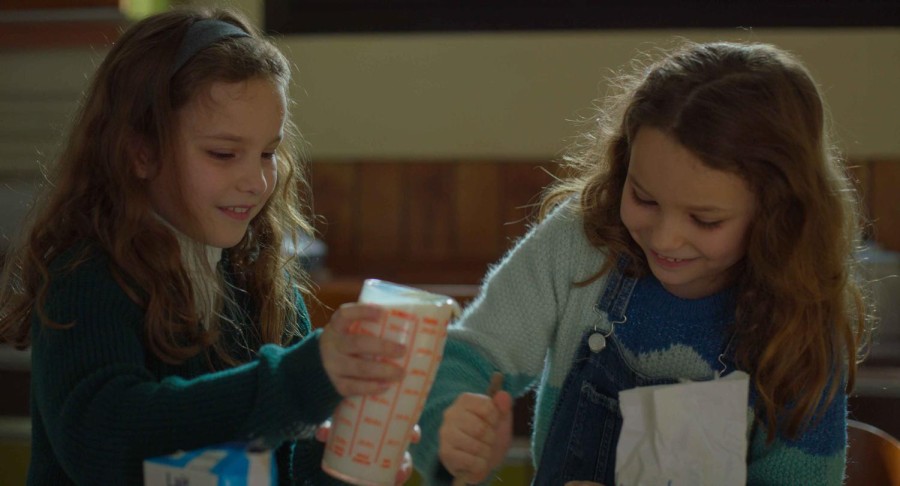Review: ‘Petite Maman,’ a monumental miniature of magical moviemaking
“Portrait of a Lady on Fire” director Céline Sciamma’s latest effort indulges the act of seeing life through a child’s eyes. “Petite Maman” opens in select cinemas across New York City on April 22.
“Petite Maman” is a French movie that premiered at the Berlin International Film Festival in February 2021. It was released in June of that year. (Image courtesy of NEON)
April 21, 2022
After the success of Queer Palm winner “Portrait of a Lady on Fire” at its premiere at the Cannes Film Festival in 2019, Céline Sciamma returns to the silver screen with an endearing tale of friendship between two young girls.
Sciamma’s tightly constructed 72-minute follow-up to what’s arguably her magnum opus is a marvelous exercise in minimalism that deftly recycles its sets to tell a penetrating tale of coming of age and coming out of it. Concerning itself with the elasticity of time, “Petite Maman” is a film of pure bliss that upholds the joyousness of life against the fear that humanity’s mortal coil can snap anytime.
The film’s premise, which is far more “The Twilight Zone” than anything the director has done before, revolves around a young girl, Nelly (Joséphine Sanz), who, after her grandmother’s passing, stumbles upon a younger version of her mother, Marion (Gabrielle Sanz), who looks like an identical version of herself. But, for all its fantastic sci-fi elements, Sciamma films “Petite Maman” with such matter-of-factness that the film’s most mystical elements are able to cloak their magic under the guise of mundanity.
Doing so, Sciamma conjures up a film akin to that of Alice Rohrwacher’s “Happy as Lazzaro,” where magic is so well-integrated into the world that it goes entirely unquestioned. This particular strain of European magical realism, in the hands of a master storyteller like Sciamma, manages to combine the charm of Miyazaki with the visual delight of Seurat’s landscapes where the world’s fuzzy fugaciousness is best captured through color-coded meticulousness. Cinematographer Claire Mathon does wonders here, making the patterned contrasts of red, blue and green pop throughout the film in order to highlight the film’s more surreal qualities while reinforcing that its characters live-in houses made of wood tiled with porcelain, just like everyone else.
This emphasis on the real to spotlight the surreal also comes through in the relationship that develops between Nelly and Marion, her mother in miniature form. The two girls never question the strange coincidence that they look exactly like one another — they simply devote themselves to staging elaborate and ridiculous plays, running around the woods and making pancakes.
They are children through and through, so immersed in fictions of their own due to their limited grasp of the universe that they’d rather just come up with more games to play than spend their time dwelling on the confusing nature of the world around them, their playground. It all boils down to the fact that when you’re a kid, everything is bigger than you, and as such is too large to comprehend. Sciamma’s decision to shrink a mother and her filmic scope into two locations and a short runtime becomes an act of escaping the bends of mortality by indulging in the fiction that the world is a blissful playground despite its transitory nature.
“Petite Maman” is a monumental miniature brimming with magic. From the way its characters saunter, to the way Mathon’s camera wanders and time collapses in on itself throughout the film, it’s clear Sciamma relishes in the supernatural temperament of her film. But in the end, it’s the truths she unearths from the musings of “Petite Maman” on time that linger beyond the film’s short lifespan.
Contact Nicolas Pedrero-Setzer at [email protected].



























































































































































